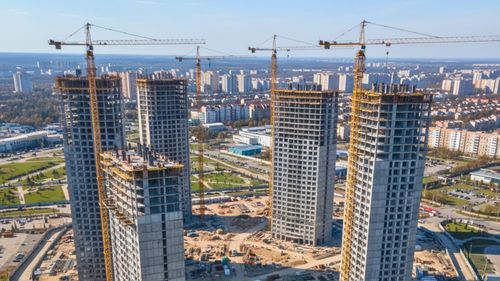
Driving Transformation and Performance with Integrated Site Management Platform in Singapore’s Construction Industry
Singapore’s construction industry is rapidly adopting technology, evidenced by construction firms allocating 28% of their expenditure to new technological solutions in 2025, an increase from 21% just the previous year. This surge reflects a growing recognition that digital transformation is not merely about individual tools but the integration of systems to unlock new levels of productivity, efficiency, and safety. Singapore’s Building and Construction Authority (BCA) champions this with its Site Management Platforms (SMPs) initiative, promoting enhanced data sharing to drive industry-wide improvements. Against this backdrop, understanding how integrated construction management solutions deliver value is key to remaining competitive and aligned with the nation’s forward-looking vision.
The Evolution of Digital Integration in Construction
Digital transformation once meant adopting standalone tools. Today, it’s about connecting systems to form an ecosystem that spans design, build, and operations. Integration — not just digitisation — is the new standard for agility and control. Integrated construction management solutions consolidate fragmented workflows, replacing siloed systems and manual re-entry with seamless data sharing across site teams, project managers, contractors, and regulators.
This unified ecosystem enables real-time visibility into every dimension of project delivery — resource allocation, safety monitoring, inspection tracking, and compliance management. For Singapore, such integration aligns perfectly with national initiatives like the Built Environment Industry Transformation Map and the CoreNet X platform, both of which stress interoperability, regulatory transparency, and efficiency.
What is a Site Management Platform
A Site Management Platform serves as a central digital hub designed for:
- Collecting, consolidating, and analysing construction site data
- Facilitating communication among developers, contractors, supervisors, and regulators
- Streamlining document management, inspection workflows, and progress tracking
SMPs are powered by a Common Data Environment (CDE), which functions as the project’s single source of truth. Integration through APIs ensures standardised data moves seamlessly between stakeholders, reducing misunderstandings and improving accountability.
Data types and datasets managed:
- Quality control and inspection data
- Site progress and milestone data
- Design and engineering data
- Material procurement data
- Environmental impact and sustainability data
- Workforce and productivity data, e.g. ePSS
- Worker safety data
- Compulsory datasets, such as QPSS attendance, pile load tests, concrete cube test results, steel strength test results and site progress.
- Optional data, like RFI forms, inspection checklists, and equipment calibration records further enhance audit readiness and traceability.
In Singapore’s fast-evolving built environment, where construction has historically struggled with efficiency, digital platforms are quietly rewriting the rules of project execution. The adoption of SMPs marks a crucial step forward, turning fragmented site data into actionable intelligence. SMPs are digital tools designed to help construction sites manage data and digitalise processes to achieve Integrated Digital Delivery (IDD). According to the Building and Construction Authority (BCA), firms using integrated digital tools report up to 15% improvement in project delivery timelines and a 30% reduction in manual reporting time.
The Data Advantage: From Field to HQ
SMPs bridge one of the sector’s most persistent gaps — the disconnect between field operations and corporate oversight. By capturing data directly from the worksite, SMPs ensure that project teams, consultants, and management share a single version of truth. That transparency enables faster decision-making, reduces project delays, and prevents costly miscommunication. For the head office, dashboards provide real-time visibility across projects, identifying bottlenecks before they escalate.
Productivity: The Power of Resource Precision
Singapore’s construction industry continues to face manpower shortages and cost pressures. SMPs help project teams manage this reality by making resource deployment smarter, not larger. Field supervisors can forecast manpower needs, monitor equipment usage, and plan deliveries based on live data rather than assumptions. Over time, such precision yields measurable gains — trimmed downtime, reduced material wastage, and leaner operations that meet the nation’s push for higher productivity as outlined in the Construction Industry Transformation Map 2025.
Building a Safer Site Culture
Safety, often seen as a compliance checkbox, becomes a data-driven discipline with SMPs. In 2022, Minister for Manpower Tan See Leng revealed that 7 in 10 companies in Singapore have work safety and health (WSH) technology in place. Digital reporting of incidents, near misses, and inspections enables early intervention and trend analysis. AI-enabled CCTVs and sensor integration identify hazards in real time, leading to a 50% reduction in safety incidents for firms with mature digital workflows.
Data Integrity and Accountability
Every digital entry in an SMP is timestamped and traceable, forming a transparent audit trail that boosts accountability. Whether tracking structural work compliance or verifying design adherence, this traceability protects both the developer and contractor. More importantly, it transforms document management into a reliable backbone for long-term facility maintenance, ensuring that handovers come with verified histories rather than incomplete paper records.
From Reporting to Foresight
The real value of SMPs lies not only in what they record, but what they reveal. With consistent data collection, patterns begin to surface — delays tied to specific workflows, materials with higher defect rates, recurring safety risks. This data maturity allows companies to move from reactive reporting to predictive management. As analytics deepen, construction firms can plan better, act earlier, and ultimately build smarter.
A Digital Foundation for Future Projects
SMPs are not merely tools — they are the infrastructure for a more resilient, transparent, and data-driven construction ecosystem. As Singapore moves toward a future defined by sustainability and smart cities, digital platforms will underpin the collaboration between architects, engineers, contractors, and owners. The firms that embrace this shift early will not only meet compliance requirements, but also set the benchmark for innovation and trust in construction.
Regulatory Alignment and Compliance
The Building Control Act enforces strict digital documentation and safety standards. SMPs ensure mandatory records — from site investigation reports to materials certifications — are stored with complete version control and audit trails. SGBuildEx, the data exchange platform for built environment, will connect SMPs across firms, enabling regulators like BCA to access project data directly, eliminating the need for physical inspections.
These systems are fully PDPA-compliant, embedding strong data protection measures and controlled access. Site Supervision Plans, required under BCA guidelines, can now be digitally managed and tracked for improved transparency.
Integration: Driving Value Across the Lifecycle
Integration delivers measurable business advantages:
- Minimised administrative burden: Automation eliminates redundant data entry and reduces manual collation for compliance submissions — cutting reporting time by up to 30%.
- Boosted productivity: Unified data flows accelerate milestones and coordination across teams.
- Cost reduction: Predictive insights and real-time resource optimisation lower operational expenditure.
- Enhanced safety and quality: Continuous monitoring and AI analysis prevent incidents before they occur.
- Reduced risk: Integrated AI-driven analytics enable predictive risk modelling, enabling early intervention.
Collectively, these outcomes position integrated SMPs not as compliance tools but as strategic assets that improve financial returns, safety, and project certainty.
Future-Proofing Through Interoperability and Innovation
The road ahead for Singapore’s construction sector lies in deeper interoperability. SMPs designed for compatibility with SGBuildex, the national data exchange platform for built environment, will enable seamless information exchange and centralised regulatory audits. Emerging technologies like AI, IoT sensors, drones, and digital twins will further strengthen predictive monitoring and sustainability compliance, creating a self-regulating, intelligent worksite network.
Forward-thinking firms are already future-proofing their operations, recognising that integration is both a competitive advantage and a compliance necessity. Leadership commitment to continuous improvement, user-centric design, and cyber resilience will define the next era of construction excellence.
Conclusion
Integrated Site Management Platforms are transforming Singapore’s built environment by linking data, people, and process into a cohesive digital framework. They reduce costs, enhance safety, accelerate delivery, and ensure regulatory compliance—all while empowering teams to work smarter and faster.
As Singapore continues its push toward a connected, sustainable, and innovation-led construction ecosystem, the integration of SMPs represents not just progress, but the foundation of the industry’s digital future.
Frequently Asked Questions (FAQs)
1: What is an integrated construction management solution?
It is a unified digital platform that connects workflows, data, and teams across the entire construction lifecycle to enable seamless project coordination, visibility, and control.
2: How does integration improve safety on construction sites?
Integration provides real-time access to safety data and analytics, enabling early identification of hazards and proactive compliance, reducing accidents and incidents.
3: Why is Singapore emphasizing Site Management Platforms (SMPs)?
SMPs facilitate enhanced data sharing and governance, improving coordination among stakeholders and supporting the regulatory framework for safer and more efficient construction projects.
4: What are the cost benefits of integrated systems?
Integrated systems reduce direct costs by minimising rework and delays, and indirect costs through better risk management and optimised resource use, leading to overall project savings.
5: How do AI and predictive models contribute to construction management?
AI analyses integrated project data to predict risks, maintenance needs, and delays, allowing teams to address issues before they escalate, improving outcomes and reducing operational risks.
➡️ Request a demo today.
Share this article
Explore Related Content
Stay up to date with our latest news features!


